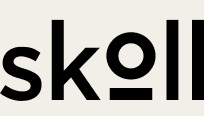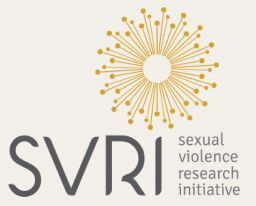A few weeks ago, in a WhatsApp message group with family members, a forwarded message showed up on my screen that read: "The COVID-19 plot thickens, please do read."
In India, where my family is from, it is typical for a day to begin with five or more messages in different family or work WhatsApp groups. The messages range from friendly updates and innocent gifs to threads pressuring you to forward messages to nine people in order to avoid ill-fated planetary alignments.
What followed the COVID-19 message a few weeks ago was an elaborate thread containing false claims about COVID-19 as a lab-made virus, intended to boost the sales of Remdesivir and benefit Bill Gates and George Soros. The forwarded text falsely claimed that the entire COVID-19 crisis is a well-orchestrated effort at the highest levels by Gates, Soros, Obama, and Clinton to develop a COVID-19 vaccine, with "the ultimate motivation of making billions of dollars in profits at the cost of only losing a mere million human lives." This particular conspiracy theory was disseminated on Facebook in the United States, and quickly spread through WhatsApp in India as well.
In the United States, journalists are battling misinformation on open or partially open social platforms like Facebook and Twitter. In India, as in other parts of the world, the problem may be trickier to catch—and harder to prevent, because misinformation spreads predominantly in closed chat groups on WhatsApp, away from the sights of content moderators and fact-checkers. Blatant misinformation campaigns like the one I received recently are dangerous under normal circumstances, and downright deadly in the midst of a pandemic. Misinformation makes it harder for healthcare authorities to effectively communicate critical health information to wider audiences.
WhatsApp misinformation in India sows distrust in healthcare institutions and encourages disregard for basic public health advice. Often disguised as medical advice, doctored videos of a prominent Indian doctor advising viewers not to get tested for coronavirus were circulated over 5,000 times on Facebook and Twitter. False rumors have led to many Indian doctors and frontline healthcare workers being evicted from their homes. This is especially important in the Indian context, where unfiltered and inaccurate information spreads rapidly on WhatsApp, and can quickly hamper efforts to trace, isolate, and care for COVID cases. Healthcare workers attempting to stop the spread of COVID-19 have been attacked by mobs across India as recently as April, and misinformation has only exacerbated the violence.
In March 2020, one particular message circulating on WhatsApp caught the attention of the Government of India’s Press Information Bureau (PIB). The message falsely claimed that the Government was spraying "CV vaccine gas inside the country, through airplanes."
The official Twitter account of PIB (@PIBFactCheck) responded by stating: "Amidst #Coronavirusoutbreak, misinformation on CV Vaccine gas spread out through Airplanes is circulating on social media. NO such action has been planned out by the Indian Government. Get your facts from trusted sources. Do not amplify #fakenews!"
Age-old rumors about vaccine safety are now being tailored to COVID-19 audiences to promote vaccine hesitancy, which could derail efforts not only for the eventual implementation of a COVID-19 vaccine, but also for the continuation of routine vaccinations for myriad other diseases.
The misinformation amid the pandemic is not limited to vaccine hesitancy. In some parts of India, the indigenous cow has been elevated to new heights and questionable treatments, such as cow urine, have been marketed as an effective remedy against the novel coronavirus. Such claims may have gained legitimacy under the current Government, which created an open call for research & development proposals that examine dubious pseudo-scientific treatments such as "cowpathy" for "medicine and health" in February this year. In such circumstances, it becomes even more difficult to distinguish science from pseudoscience in a pandemic, especially as misinformation seems to travel even faster than COVID-19 in India.
In Mizoram, approximately 15 individuals were arrested for spreading a fictitious and official-sounding directive from state officials, asking local citizens from outside Mizoram to return home at once. Similar arrests have taken place in Rajasthan, Odisha, and other Indian states. Successive state governments have responded to misinformation by conducting mass arrests rather than tackling the problem at its root by improving health communication in localized languages.
Effective health communication in a pandemic requires systematic investments in health infrastructure and adequate training for academics and journalists. Fortunately, many organizations are meeting this gap and providing resources and responses to tackle such misinformation. Organizations such as SciLine, the International Fact Checking Network (IFCN), and COVID Explained have developed several resources, unpacking claims about COVID-19. While many such projects focus on general misinformation related to COVID-19, there is an increased need for addressing vaccine misinformation specifically, and to provide the context needed for individuals that speak a variety of different languages, with varying health literacy levels.
There is a paucity of evidence-based information for journalists, fact-checkers and everyday WhatsApp users to effectively unpack disingenuous claims, whether it be anti-vaccine propaganda or the marketing of natural and herbal remedies as cures for the coronavirus.
India has detected 1.2 million cases and 30,000 deaths of COVID-19, according to the Ministry of Health & Family Welfare. Given the difficulties around active surveillance in India, experts believe the actual number could be even higher. Even if official estimates are to be believed, however, the contagion of misinformation threatens to derail existing efforts and present roadblocks to the development of a future vaccine.
It is now more imperative than ever before to prioritize effective health communication in order to tackle the scourge of misinformation, especially as we double down on efforts to rein in the COVID-19 pandemic.
Mohit Nair currently serves as Partnerships Director at FairVote Washington, a non-profit organization based in Seattle, WA, and a consultant working with the Database Implementation Team at Meedan. Previously, he worked with the Medecins Sans Frontieres (MSF) Vienna Evaluation Unit and with MSF Operational Centre Barcelona in India. He holds a Master of Public Health from the Harvard University T.H. Chan School of Public Health and a Bachelor of Science from Cornell University.
This blog is part of a series on the impact of COVID-19 on population health and society, written by contributors to the Meedan Digital Health Lab COVID-19 expert database. The blog draws on public health expertise to provide broader context to themes represented in more granular database entries as well as highlight connections between them. To learn more about the database, see our list of experts, or to ask a question to our team, please visit the database website.
We collaborated with 53 partner organizations worldwide to design and carry out our 2024 elections projects. We extend special gratitude to our lead partners in Brazil, Mexico and Pakistan, whose work we highlight in this essay.
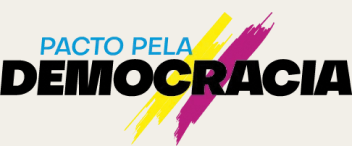
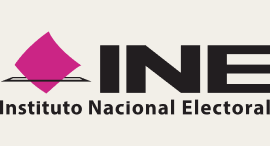
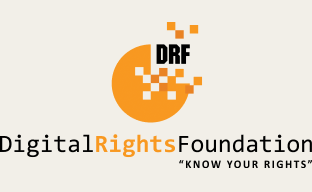
The 2024 elections projects featured in here would not have been possible without the generous support of these funders.
